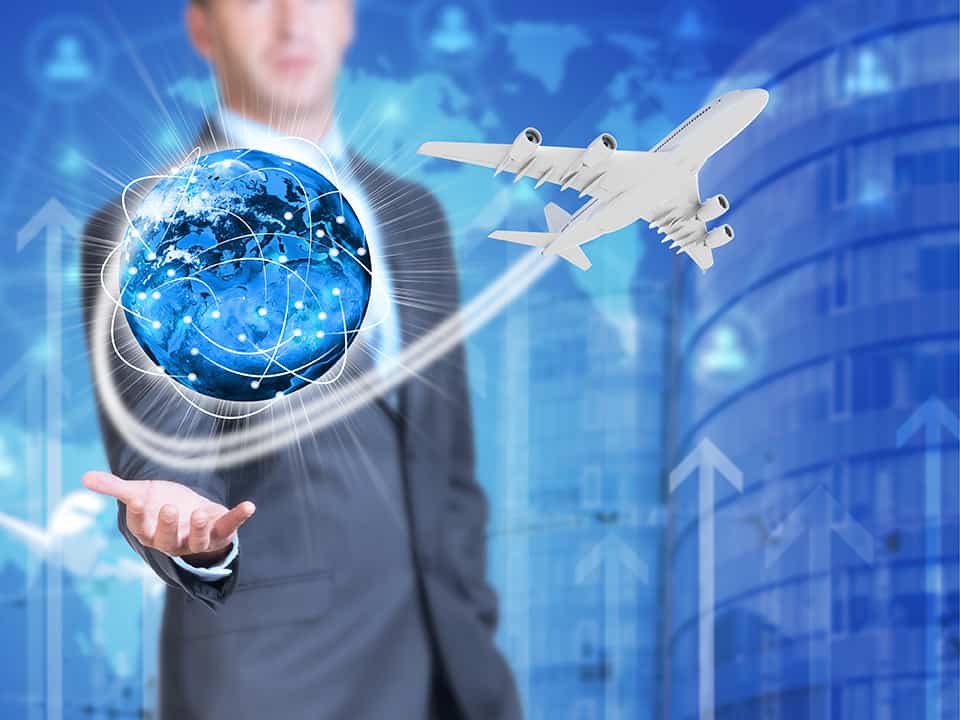For the aviation industry, the pandemic has delivered a devastating blow after years of remarkable growth. However several companies and technologies are propelling the industry forward, creating innovative opportunities in response to the crisis.
After a difficult year, aviation has emerged as one of the more resilient industries, supported by government funding, loans, wage subsidies, tax deferrals and equity injections.
What changes have already been made?
With more employees working from home over the last year, the focus has been on establishing and maintaining secure access to IT services as well as cybersecurity and cloud technologies to allow for operations to be secure and efficient remotely. Airports have also had to adapt quickly, implementing solutions to enable passengers to travel safely, including touchless passenger processing and PRC testing (rapid result) at destinations.
At check-in, the focus has been on a contactless process and enabling self-bag drop. Biometric technology offers automatic boarding gates, ID documentation scanning and real-time notifications to mobile with flight and baggage information. As technologies become commonplace and travel demand returns, aviation gains increasing popularity as a case for trading on international markets and CFDs. This perhaps more recently spurred on a Deutsche Bank analyst upgrading several airlines to buy from hold, including American Airlines (AAL), Delta Air Lines (DAL) and United Airlines (UAL), assuring the sector was “back on track”.
Three-quarters of airports have invested in 5G communications networks opening up several opportunities for those who spend a great deal of time travelling. 5G promises incredibly fast connections for real-time communication, a perfect situation for virtual or augmented reality technology as well as trading, for those looking to maximise on extensive time travelling. Currently, the major players in 5G in aviation are Dassault Systemes SE, Gogo LLC, SITAONAIR (SITA.aero), BAE Systems PLC and Deutsche Lufthansa AG.
What could the future hold?
According to the SITA Air Transport IT Insights 2020 Study, 97% of airlines plan to use mobile applications to support their operations, including check-in, payments and passenger services, by 2023. Almost three-quarters of airports and airlines will continue to invest in data exchange, cloud services, cybersecurity, and business intelligence to accelerate their digital airport processes.
Many tech advances have arrived just in time for a post-pandemic world. Accelerated digitalisation leads the way, followed by impressive uses of AI, machine learning, 5G networks and blockchain for aviation-wide industry savings. Blockchain initiatives will offer revenue increases through the secure storage of passenger information as well as automated workflows and insights into inventory. Under its Airport 4.0 initiative, Malaysia Airports is trialling the use of a social robot, the “Aerobot”, to support safe, contactless passenger support at Istanbul Sabiha Gokcen International Airport (ISG). The Aerobot speaks 20 languages and using Artificial Intelligence (AI) technology, can profile passengers on their approach and customise relevant conversation points. According to SITA’s study, 54% of airlines have set major programmes in R&D for AI development, so we can likely expect to see more initiatives like the Aerobot across the industry.
The International Monetary Fund (IMF) forecasts 5.5% GDP growth in 2021, assuming government support for businesses continues. Although the industry has a way to go, with tech innovations, regained customer confidence and vaccination successes, the way ahead is looking very positive.
Tags: Tech for Aviation, Biometric technology, aviation industry
